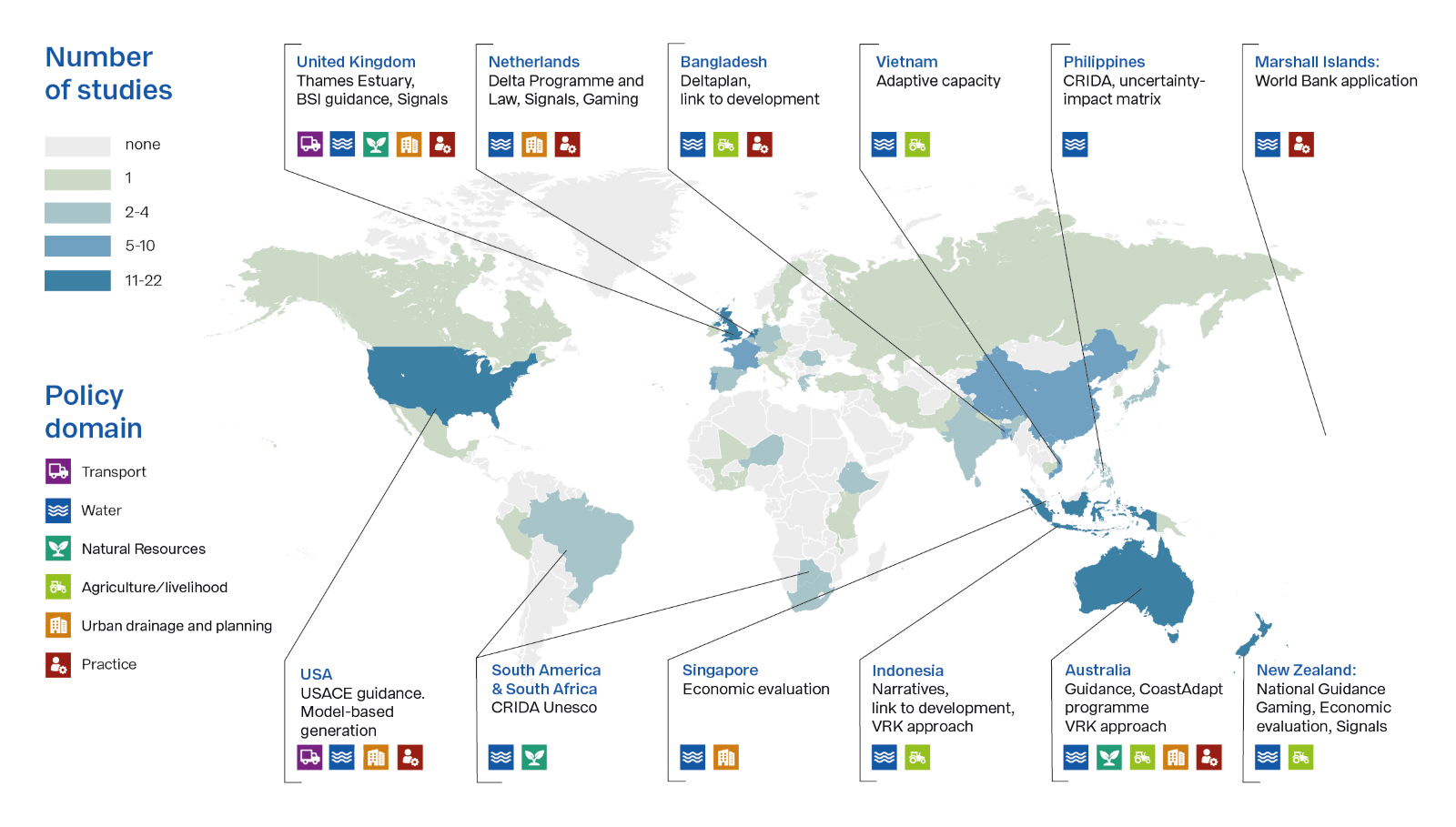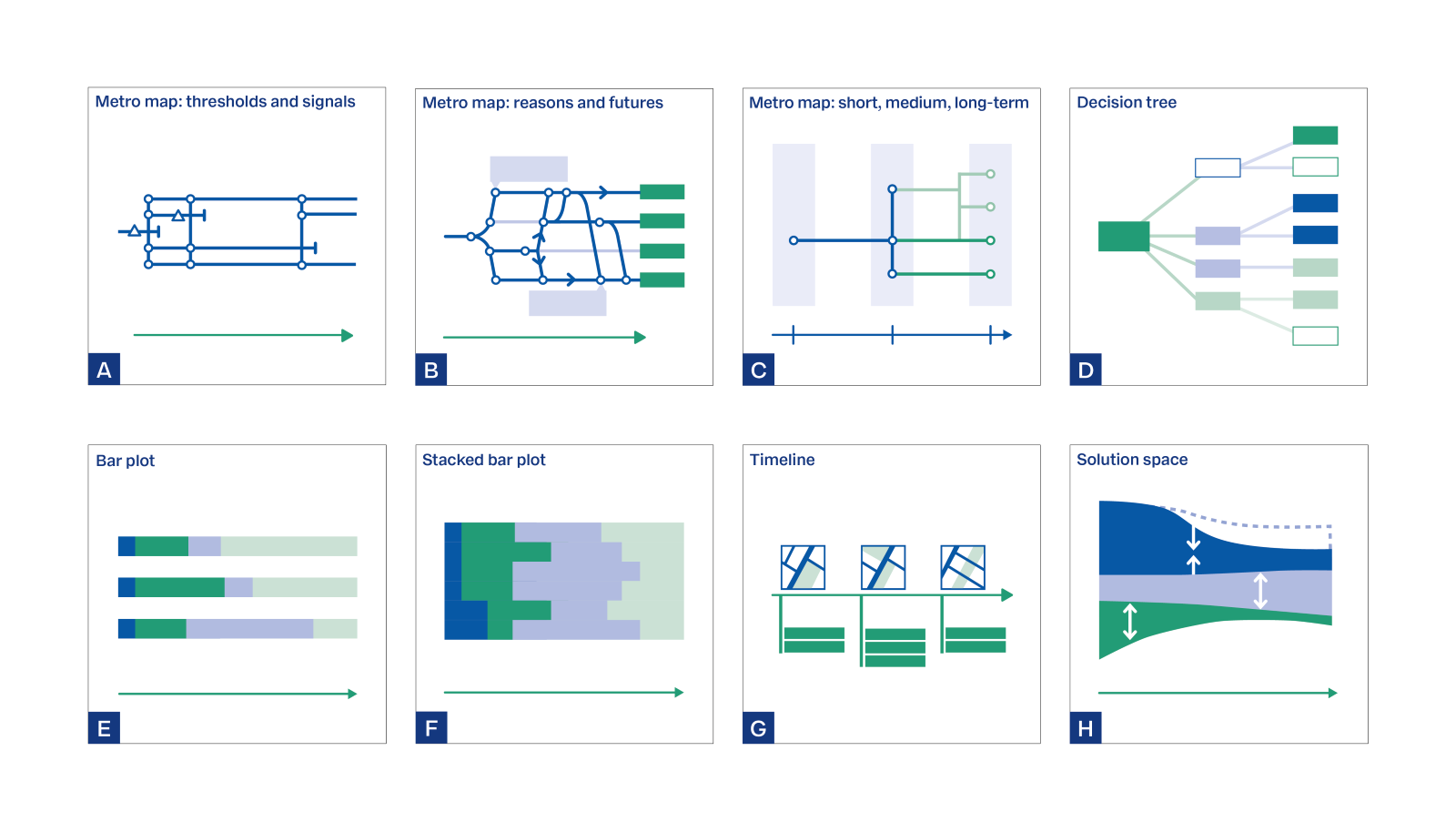10 years of adaptive pathways planning: lessons learned
Adaptation to the effects of climate change is becoming increasingly important. A tool that can help deal with such a long-term uncertainty is the adaptive pathways method, in which pivotal decisions are aligned with multiple pathways under different futures. In a recent study, published in Global Environmental Change, we analysed the use of adaptive pathways worldwide over the period of 10 years. We found that adaptive pathways planning helps to accelerate adaptation, generate new ideas, and identify path-dependency, barriers and opportunities.

Applied in various domains
The analysis was carried out by a team of researchers from Deltares, Utrecht University, Delft University of Technology, and the Climate Change Research Institute from Victoria University of Wellington.
The adaptive pathways planning method is now over a decade old and has since then been applied in various domains and decision contexts, both in theory and practice. Given the urgency for adaptation consequent upon observed climate changes, their impacts globally and the range of climate projections, it is timely to assess what can be learned from these studies.
238 pathways studies
In the paper, examples from 355 studies were mapped and 238 pathways studies and applications worldwide assessed in detail, in addition to over 20 guidance documents. The authors found applications in coastal management, agriculture and forestry, urban drainage, spatial planning and heat risks, water resources management, and ecosystem management.
Our paper provides a rich overview and lessons of adaptive pathways applications. This can help to further accelerate adaptation which is much needed with the increasing climate change impacts worldwide.
Marjolijn Haasnoot, lead author

Lessons learned
An adaptive pathways analysis can be tailored to different contexts and needs, and typically follows a staged approach from screening to detailed assessment. This helps to target the analysis and deal with complexity. Methods include narratives, impact models, and stakeholder participation tools.
Different approaches and methods for pathways development are commonly associated with different visualisations of pathways. These range from the typical Deltares approach using metro maps, but also decision trees, (stacked) bar plots and solution-space-based visualisations. Such visualisation helps increase understanding for developing an adaptive plan.
Adaptive pathways increasingly require multiple actors, values, hazards, and actions at various scales for different purposes which increases complexity. Judy Lawrence (Victoria University of Wellington):
“To enable further applications in practice, it is important that experiences are shared. Also, governance arrangements to embed the adaptive pathways approach and its ongoing monitoring, is important. In New Zealand we have experience with using games to familiarise the actors with adaptive pathways in a ‘safe space’ for discussing conflicting objectives and for gaining understanding and buy-in to a wider range of adaptation options and pathways."

Horizon 2020
At Deltares this research is supported by the European Union’s Horizon 2020 research and innovation programme as part of the Pathways2Resilience project and the Myriad Project. Valeria Di Fant (Deltares/Utrecht University):
“The lessons learned in this study will be helpful when developing pathways for climate resilience with European regions within the Pathways2Resilience project. Within this project, I will also apply my PhD further expand the existing pathways approach to better include opportunities and allow for transformational adaptation.”

